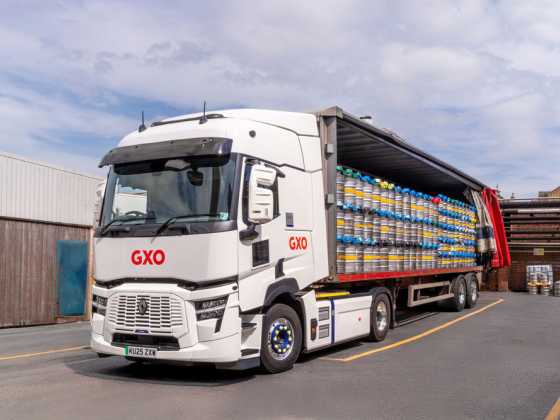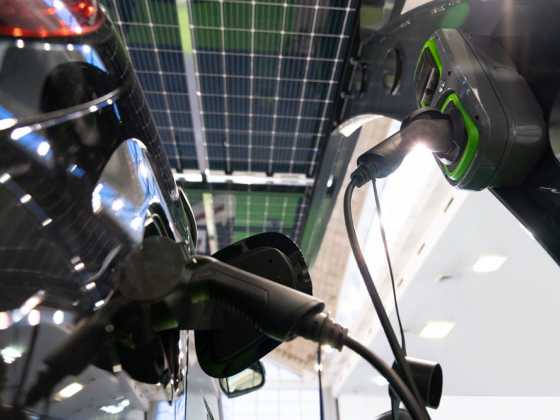Planning for an electric fleet future

With manufacturers gradually phasing out petrol and diesel vehicles to comply with environmental targets, a zero-emission vehicle future is fast approaching. So how can fleet operators plan for this transition? We share some essential advice.
There are now over 100 electric cars available in the UK, as well as around 25 electric vans, according to the SMMT. The range of these vehicles has improved, with some even achieving up to 450 miles on a single charge. The charging infrastructure has expanded too; there are now over 70,000 public chargers in the UK. But while choice and the charging infrastructure has improved, it can still be a big undertaking for a fleet operator to move over to electric vehicles. They must, fundamentally, make sure that the move does not jeopodise business requirements and is not cost prohibitive.
So how can fleet managers ensure a smooth transition? From using telematics
to help identify which vehicles to switch, to implementing charging infrastructure and accessing funding, this feature shares some advice on successful fleet electrification.
Selecting vehicles
To find out which vehicles would be suitable to move to electric, it is important to examine the fleet’s operational requirements, including the types of journeys and typical mileages. Do the vehicles perform ‘back to base’ operations, or they do short urban deliveries, or do they provide a round-the-clock services, for example?
Telematics can be a useful tool to provide initial suitability assessments, showing which vehicles will fit your commercial requirements, based on mileage, efficiency and total cost of ownership (TCO). Some telematics solutions even use artificial intelligence to analyse large amounts of data and make recommendations on which vehicles can be electrified.
Telematics can also help get the most out of an electric fleet once it’s in place, as the technology can monitor energy consumption, battery charge and help
with route planning and charging.
Charging requirements
At the same time as assessing the vehicles, a fleet manager should consider their charging requirements; could they be charged at the employee’s home, on the public charging network, or will workplace charging need to be installed?
If home charging could work, this option should be talked through with the employee, ensuring they know what the installation work involves and also how charging will be reimbursed.
If it’s decided that you need to install charging infrastructure on site, there are many points to contemplate. Firstly, you’ll need to understand your power availability. This involves finding out the size of your agreed supply capacity (ASC) from your DNO, how much of that power you use, and what spare capacity remains for EV chargers. This process is vital so you do not
exceed your supply and risk a power outage.
If your site does have power limitations, there are ways to get grid connection upgrades via your district network operator, although this is an expensive move.
Other ways include using smart chargers with load balancing capabilities, or having the ability to generate your own power, such as solar, used with energy storage.
Load balancing systems/software will use real time energy monitoring to change the maximum amount of energy that chargers can use based on availability and requirement of the site.
An important part of the EV installation process is getting a site survey. This will assess how EV charging can be installed and engineers will typically visit the site to assess power requirements and if any groundworks would need to be done.
If you don’t own the property, you will need to obtain consent from the landlord
for chargepoints to be installed. This can be time consuming and may involve
legal work, so it’s worth beginning these conversations as early as you can.
Understanding charging speeds
It is useful to have an understanding of charging speeds.
Fast charging has speeds of between 7kWh – 25kWh and is suited to destination, fleet, and overnight depot charging.
Rapid charging has speeds of 50kWh – 100kWh and can be used for quick turnaround charging.
Ultra-Rapid has speeds of 150kWh – 400kWh and is suited for public charging hubs, car parks, short-stay destinations and for electric HGVs.
It’s also helpful to understand the difference between AC and DC charging.
A chargepoint with alternating current (AC) will get the alternating current from the grid and pass this to the vehicle to convert to direct current. The vehicle dictates the maximum AC charging rate, typically 7kW, 11kW and 22kW (though there are few vehicles capable at the highest rate).
DC charge points have the converter within the charger which means that the
power is converted to DC before it is passed to the EV. The size of the converters will be much bigger than those inside a vehicle and therefore this results in a faster charge time.
Back office systems
When choosing your chargepoint installer, it's important to find out about their back office portals. A good back office system will allow you to monitor charging times, speeds, payments and conduct CO2 reporting. It's also important to look at what aftercare the chargepoint operator offers for service and maintenance, including callouts for repair.
Funding schemes
There are various government funding schemes for electric vehicles and chargepoints.
Whilst there is no grants for electric cars anymore, it was confirmed in the Autumn Budget that the Plug-in Van Grant (PiVG) is to be extended for a further year, with £120m earmarked for 2025/26. This money also covers
the manufacture of wheelchair-accessible EVs.
The PiVG currently offers up to £2,500 for small vans (less than 2,500kg gross
vehicle weight) and £5,000 for large vans (between 2,500kg and 4,250kg gross vehicle weight), available on eligible vehicles.
Eligible small trucks can get a maximum discount of £16,000 and large trucks can get a maximum discount of £25,000.
At the moment, there is still funding confirmed for the Workplace Charging
Scheme (WCS) until 31 March 2025.
The Workplace Charging Scheme is open to businesses, charities, public sector organisations and small accommodation businesses, such as hotels or campsites (with 249 employees or less).
The WCS grant covers up to 75 per cent of the total costs of the purchase and
installation of EV chargepoints and is capped at a maximum of £350 per sockets and 40 sockets across all sites per applicant.
There is also the EV infrastructure grant for staff and fleets, with funding confirmed until 31 March 2025. The grant is is for small-to-medium-sized businesses in the UK with 249 employees or less and can help cover the cost of wider building and installation work, such as wiring and posts, that’s needed to install multiple chargepoint sockets. The work can be for sockets that are to be installed now and in the future.
The scheme covers up to 75 per cent of the cost of the work. There is a limit of £15,000 per grant and you can get up to £350 per chargepoint socket installed and £500 per parking space.
Future-proofed fleet
The new Labour government has confirmed its plans to reinstate the 2030 ban on the production of new petrol and diesel cars, with vans likely to come later. Whichever date is in place though, the future direction is certain - zero emission transport will become a reality. Fleet operators that make the switch now will be future-proofing their operations.






